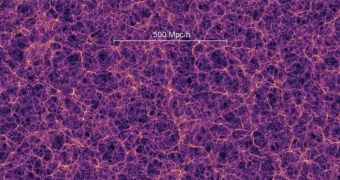New studies are beginning to paint a picture of the early Universe that experts were not expecting. The newest data would appear to indicate that the Cosmos was a lot clumpier in its earliest days than scientists first calculated based on available evidence.
The information that astronomers used for the new study were collected during the largest galactic survey ever conducted. Investigators now say that the data could force science to reconsider its position on the nature of gravity
These discoveries could also lead to a redesign of the standard model of cosmology, the basic set of theories that explains how the Universe was sprung into existence by the Big Bang, how it expanded violently, and how it evolved ever since.
The concept of cosmic smoothness is easy to grasp. Today, matter tends to be distributed among large, separated structures, such as star clusters, galaxies, superclusters and giant walls. Logically, if the Universe clumped up by now, it must have started out smooth.
But astronomers failed to find signs that this was indeed the case. They notice the same amount of matter clusters regardless of how far they look back in time. The Cosmos is 13.75 billion years old.
“Maybe on very large scales, Einstein’s general relativity is slightly wrong. This potentially could be one of the first signs that something peculiar is going on,” says University College London (UCL) expert cosmologist Shaun Thomas.
The scientist is the lead author of a new paper detailing the findings, which is published in the latest issue of the esteemed scientific journal Physical Review Letters. He explains that the galactic survey found more clumps of matter in the early Universe than existing models allow for.
“It’s a little like discovering that the Earth had more continents than you thought it did,” University of Waterloo physicist Michael Hudson says. The scientist was not a part of the investigation.
“These are scales which are starting to approach a reasonable fraction of the size of the universe, and they haven’t really been measured before,” he goes on to say. Cosmologists are now bound to start reverifying existing theories, in order to ensure that they are correct, Wired reports.
“It will be interesting to see if this does bear out, if the standard picture can be changed with a few minor tweaks, or if we need a whole-scale revision. We’ll have to wait and see what happens,” Hudson says of the standard model of cosmology.

 14 DAY TRIAL //
14 DAY TRIAL //